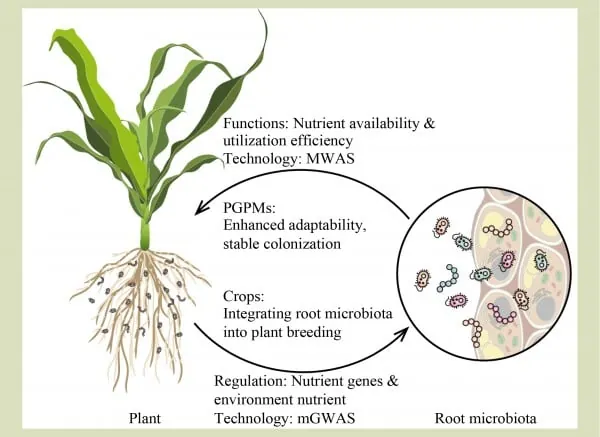
Unlocking the Secrets of Plant and Root Microbe Interactions for Superior Nutrient Use!
2025-06-11
Author: Sarah
Revolutionizing Our Understanding of Plant-Microbe Interactions
Did you know that beneath the soil lies an intricate world of microorganisms that plays a pivotal role in how plants thrive? A recent study led by researcher Yang Bai from Peking University delves into the fascinating relationship between plants and their root microbiota—a vibrant community of bacteria, fungi, and other microorganisms.
The Impact of Soil Nutrients on Microbial Communities
This groundbreaking research, published in the journal *Frontiers of Agricultural Science and Engineering*, reveals how various soil nutrients shape the microbial landscape in plant roots. For instance, consistently applying nitrogen fertilizers alters the microbial community, diminishing nitrogen-fixing organisms while multiplying those that thrive on available nitrogen. Similarly, increasing phosphorus fertilizers can ignite a surge in phosphorus-solubilizing bacteria and mycorrhizal fungi, transforming hard-to-reach phosphorus into a form that plants can easily absorb.
The Genetic Dance: How Plants Communicate with Microbes
But the interaction isn’t one-sided! Plants possess nutrient-related genes that respond to stress, influencing how they interact with their root microbiota. When starved for phosphorus, plants activate specific genes that encourage the secretion of organic acids. These acids not only help dissolve bound phosphorus but also signal beneficial microbes to gather near the roots, forming a mutually beneficial alliance that enhances phosphorus uptake.
Enhancing Nutrient Availability through Microbial Action
On the flip side, the root microbiota dramatically boosts nutrient availability for plants. Nitrogen-fixing microbes convert atmospheric nitrogen into usable forms, reducing the need for chemical fertilizers, while phosphorus-solubilizers unleash the locked-up phosphorus in the soil through their enzymatic action. Additionally, beneficial hormones produced by these microbes foster robust root development, ultimately improving nutrient absorption efficiency.
A Complex Web of Interactions
In summary, this illuminating study underscores the intricate and symbiotic relationships between plants and their root microbiota in nutrient utilization. The environment's nutrient conditions alongside plant genetic responses intricately regulate these microbial communities. This groundbreaking insight not only enhances our understanding of plant biology but opens doors to more sustainable agricultural practices, potentially reducing our reliance on chemical fertilizers and fostering healthier ecosystems.



 Brasil (PT)
Brasil (PT)
 Canada (EN)
Canada (EN)
 Chile (ES)
Chile (ES)
 Česko (CS)
Česko (CS)
 대한민국 (KO)
대한민국 (KO)
 España (ES)
España (ES)
 France (FR)
France (FR)
 Hong Kong (EN)
Hong Kong (EN)
 Italia (IT)
Italia (IT)
 日本 (JA)
日本 (JA)
 Magyarország (HU)
Magyarország (HU)
 Norge (NO)
Norge (NO)
 Polska (PL)
Polska (PL)
 Schweiz (DE)
Schweiz (DE)
 Singapore (EN)
Singapore (EN)
 Sverige (SV)
Sverige (SV)
 Suomi (FI)
Suomi (FI)
 Türkiye (TR)
Türkiye (TR)
 الإمارات العربية المتحدة (AR)
الإمارات العربية المتحدة (AR)